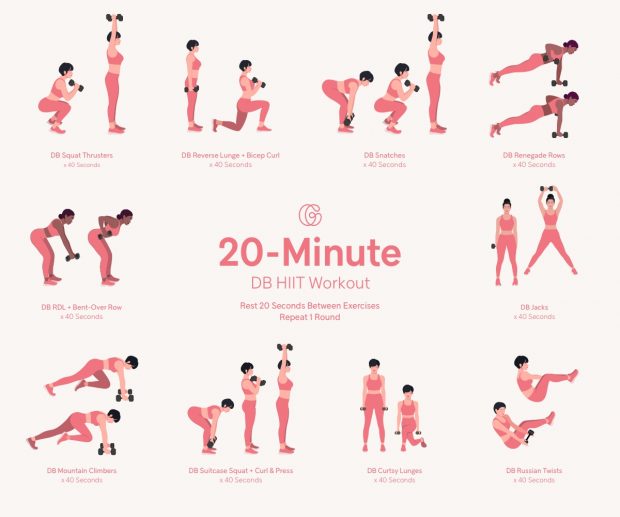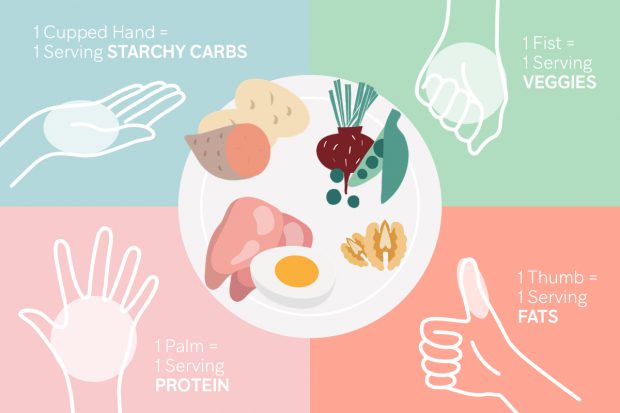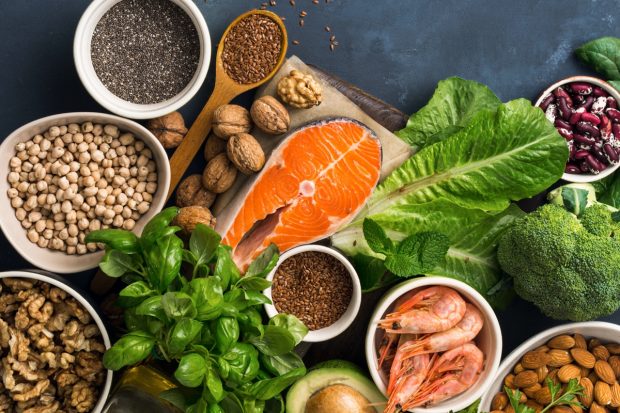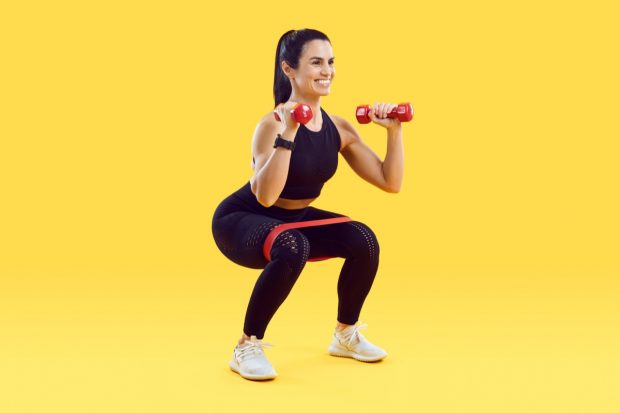
Remember back to your roaring 20s? You could live on pizza and donuts alone without the calories sticking to your ribs. Now that you’ve hit middle age, it seems no matter what you do, those extra pounds around your waistline won’t seem to budge.
So, is perimenopausal weight gain inevitable?
While weight gain is much more common before and during menopause, you don’t have to take it lying down! You simply have to shift your mindset around food and exercise. Here are 5 tips to fight perimenopausal weight gain for good.
Why Are You Gaining Weight After 40?

During perimenopause, your body produces more cortisol. High cortisol levels are associated with the following symptoms:
- Insomnia
- Low energy, even after a good night’s sleep
- Frequent colds
- Slowed metabolism
- Increased cravings for junk food
- Bloating
- Weight gain, especially around the waistline
- Decreased sex drive
- Aches and pains
- Depression
Tip #1: Do Short Bouts of Intense Cardio
Overdoing it on long bouts of steady-state cardio accelerates the aging process. Long bouts of steady-state cardio—think jogging, biking or elliptical training—put your body under prolonged stress, which produces free radicals that can damage your cells and cause inflammation, while increasing cortisol levels.
Fortunately, there is a way to do cardio that tricks your metabolism into burning belly fat first. By focusing on short bouts (20 to 30 minutes) of intense moves using multi-muscle movements and resistance training, you’ll target your trouble area and increase your metabolism. It’s a win-win.
Here’s the perfect 20-minute dumbbell HIIT workout to fight fat during perimenopause.

The bottom line: more cardio doesn’t equate to more fat loss.
Tip #2: Structure Your Meals

Contrary to popular belief, skipping meals is not the best approach to weight loss after 40. Instead, eat regular meals and healthy snacks throughout the day to keep weight off and feel more satisfied.
This means not skipping meals or trying fad diets, which can further slow your metabolism and make it harder to lose weight. Focus on consuming 5 smaller meals each day and avoid late-night eating. Try to consume your larger meals earlier in the day, so you’ll have much more time to burn calories before you go to bed.
Related: Nutrition 101: The Real Truth on Proteins, Carbs and Fats
Tip #3: Focus on Healthy Calories

Build your meals around low glycemic index (GI) foods that won’t spike your blood glucose levels, like lean proteins, healthy fats, veggies and whole grains. Try to cut back on the not-so-healthy fare, like starchy carbs—bread, pasta, potatoes and baked goods.
Beverages are also a source of sneaky calories, so replace sodas and alcohol with sparkling water. And instead of ordering a latte, opt for filtered coffee with a splash of milk.
Because muscle mass starts to decrease during perimenopause, you’ll want to up your daily intake of protein. Protein can also help ward off cravings and keep blood sugar levels from elevating.
Fiber is another go-to during perimenopause, since it helps you feel fuller for longer periods of time, which curbs cravings. Aim for at least 21 grams of fiber each day. Fruits, veggies, whole grains and beans are all great sources of fiber.
Last but not least, up your intake of calcium each day to 1200 milligrams. Calcium helps keep your bone health in check, which is vital during perimenopause, since your risk of osteoporosis increases.
Tip #4: Add Strength Training to Your Routine

After turning 40, the average person gains a pound of fat per year, which significantly slows down metabolism. Additionally, estrogen production starts to decline during perimenopause, causing your bone rebuilding process to slow down. Strength training is a great way to help maintain a healthy skeletal and muscular system.
Adding a 20-30 minute strength training program to your schedule at least 2-3 times per week will counteract muscle and bone loss. According to research, strength training burns more fat and increases muscle mass more than aerobic exercise
Related: 3 Reasons Why You Should Strength Train to Improve Your Long-Term Health
Tip #5: Reduce Alcohol Consumption

Alcohol, the go-to for winding down at the end of a long day, has been found to significantly increase cortisol levels, which leads to weight gain, slowed metabolism and insomnia. It also increases blood pressure and anxiety.
If you’ve reached the age of perimenopause, limit your alcohol intake to keep off that extra weight around the midsection.
Takeaway
It’s important to focus on small, sustainable changes rather than trying to do everything at once. Consistency always beats perfection, so be kind to yourself and celebrate your wins along the way. And if you need a bit of inspo, sign up for a free 7-day trial with Gymondo and use it as your perimenopausal guide to stay fit and healthy. Explore 100s of workouts and 1000s of recipes to reach your health and fitness goals after turning 40.




Kommentar schreiben